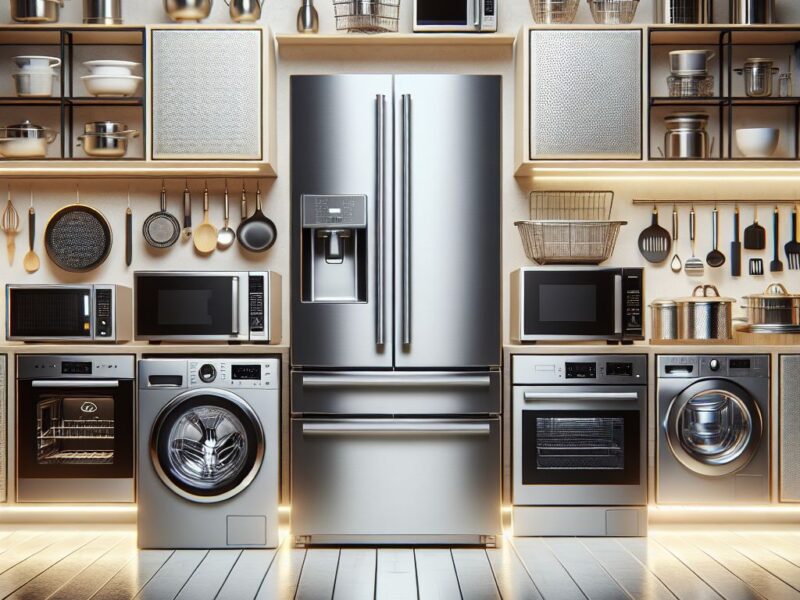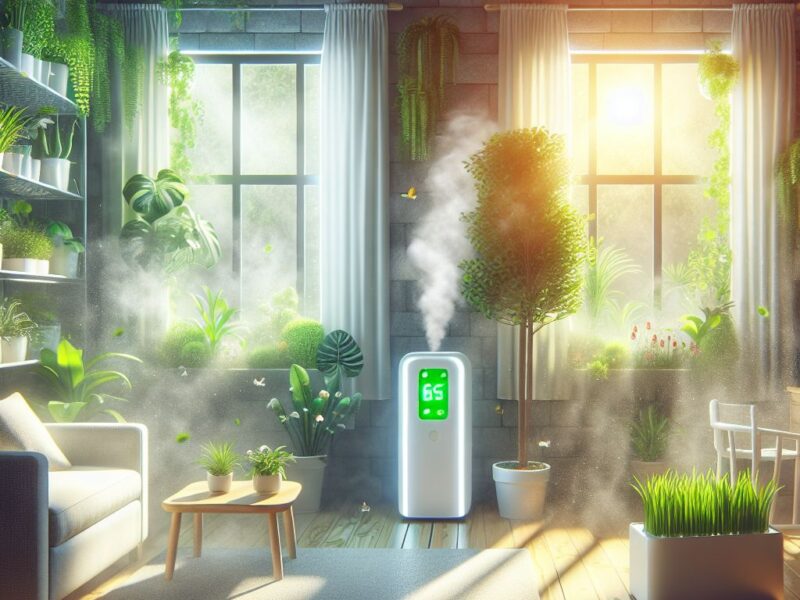Key Takeaways
- Choose an air purifier with a HEPA filter to remove 99.97% of allergens.
- Consider the Clean Air Delivery Rate (CADR) to match the purifier with your room size.
- Look for multi-stage filtration systems for enhanced air cleaning.
- Regularly replace filters to maintain efficiency and air quality.
- Energy-efficient models can save on electricity bills while keeping the air clean.
Dust and allergens can wreak havoc on our health, leading to sneezing, itchy eyes, and even asthma attacks. Fortunately, air purifiers can help mitigate these issues by filtering out harmful particles from the air. Let’s dive into the best air purifiers for dust and allergens to help you breathe easier.
Best Air Purifier for Dust & Allergens
“The Coway Airmega 230 stands out for its large coverage area and high CADR ratings, making it an excellent choice for those looking to reduce allergens in their home.”
Finding the right air purifier can be a game-changer for those suffering from allergies. But with so many options on the market, it can be overwhelming to choose the best one. To make it easier, I’ve researched and compiled a list of top air purifiers designed specifically to tackle dust and allergens.
Why Dust and Allergens Impact Health
Dust and allergens are more than just nuisances; they can significantly affect your health. When you breathe in these particles, they can trigger allergic reactions and respiratory issues. Common allergens include pollen, pet dander, mold spores, and dust mites. These particles are often microscopic, making them difficult to avoid without proper filtration.
For example, during spring, pollen levels can skyrocket, causing hay fever symptoms in many people. Similarly, pet owners often struggle with pet dander, which can linger in the air and on surfaces. Dust mites thrive in warm, humid environments, feeding on dead skin cells and causing allergic reactions.
Understanding Air Purifiers
Air purifiers are designed to remove contaminants from the air, making it cleaner and safer to breathe. They come in various shapes and sizes, but the core function remains the same: to filter out harmful particles and improve indoor air quality. For example, some models like the Alen BreatheSmart Fit50 are particularly effective in beating seasonal allergies and providing breathing relief.
There are several factors to consider when choosing an air purifier, including the type of filtration system, the coverage area, and the Clean Air Delivery Rate (CADR). Understanding these elements can help you make an informed decision.
- Filtration System: The type of filter used in an air purifier is crucial for its effectiveness.
- Coverage Area: The size of the room you want to purify will determine the necessary coverage area of the purifier.
- CADR: This rating measures how quickly and efficiently the purifier can clean the air.
How Air Purifiers Work
Air purifiers use a combination of filters to capture and remove particles from the air. The most effective models typically use a multi-stage filtration system, which includes a pre-filter, a HEPA filter, and sometimes an activated carbon filter.
The pre-filter captures larger particles like dust and pet hair, extending the life of the HEPA filter. The HEPA filter is the star of the show, capable of trapping 99.97% of particles as small as 0.3 microns. This includes most common allergens such as pollen, dust mites, and mold spores. Activated carbon filters can absorb odors and volatile organic compounds (VOCs), providing an additional layer of protection.
Types of Filtration Systems
Different air purifiers use different types of filtration systems. Here are the most common types:
| Filter Type | Function |
|---|---|
| Pre-Filter | Captures large particles like dust and pet hair. |
| HEPA Filter | Traps 99.97% of particles as small as 0.3 microns. |
| Activated Carbon Filter | Absorbs odors and VOCs. |
Besides these, some air purifiers also feature UV-C light to kill bacteria and viruses, and ionizers to charge particles, making them easier to capture. However, it’s essential to note that ionizers can produce ozone, which may be harmful in high concentrations.
Importance of CADR Ratings
The Clean Air Delivery Rate (CADR) is a critical metric when evaluating air purifiers. It measures the volume of filtered air delivered by the purifier, indicating how quickly and efficiently it can clean the air in a room. Higher CADR ratings mean faster and more effective air purification.
For example, if you have a room with a lot of dust and allergens, you’ll want an air purifier with a high CADR rating for both dust and pollen. This ensures that the air purifier can handle the volume of contaminants in the room and keep the air clean.
Choosing the Right Air Purifier
Now that you understand how air purifiers work and the importance of CADR ratings, it’s time to choose the right one for your needs. Consider the size of the room, the specific allergens you need to target, and your budget.
Assessing Room Size and Coverage
One of the first things to consider is the size of the room where you’ll be using the air purifier. Most air purifiers specify their coverage area, usually measured in square feet. Make sure to choose a model that can handle the size of your room.
For instance, the Coway Airmega 230 is suitable for larger rooms up to 361 square feet, making it ideal for living rooms or master bedrooms. On the other hand, the Levoit Core 300 is perfect for smaller spaces like bedrooms or offices, covering up to 219 square feet.
Top Air Purifiers for Dust and Allergens
Choosing the best air purifier for dust and allergens involves looking at various factors like the type of filtration, coverage area, and CADR ratings. Here are some of the top models that excel in these aspects.
“The Coway Airmega 230 is praised for its large coverage area and high CADR ratings, making it an excellent choice for those looking to reduce allergens in their home.”
Besides the Coway Airmega 230, several other air purifiers stand out in terms of performance and reliability. Let’s take a closer look at these top models.
Coway Airmega 230
The Coway Airmega 230 is an outstanding air purifier that covers up to 361 square feet, making it suitable for larger rooms. It features a HEPA filter that captures 99.97% of particles as small as 0.3 microns, including dust, pollen, and pet dander. The Airmega 230 also boasts a high CADR rating, ensuring quick and efficient air purification. Learn more about prolonging the Coway Airmega filter life to maintain its efficiency.
One of its unique features is the real-time air quality monitoring, which adjusts the fan speed based on the detected air quality. This ensures optimal performance while saving energy. Additionally, the Airmega 230 has a sleek design that blends well with modern home decor.
Honeywell HPA300 HEPA Air Purifier
The Honeywell HPA300 is another excellent choice for those dealing with allergies. It covers up to 465 square feet, making it ideal for larger living spaces. This model uses a True HEPA filter to capture up to 99.97% of airborne particles, including dust, pollen, and mold spores.
What sets the HPA300 apart is its high CADR ratings: 320 for smoke, 300 for dust, and 300 for pollen. This means it can effectively clean the air in a large room multiple times per hour. The unit also features four cleaning levels, including a turbo setting for maximum air cleaning power.
Blueair Blue Pure 211+
“The Blueair Blue Pure 211+ is known for its powerful filtration system and large coverage area, making it a top choice for those looking to improve indoor air quality.”
The Blueair Blue Pure 211+ is perfect for medium to large rooms, covering up to 540 square feet. It features a three-stage filtration system, including a washable pre-filter, a particle filter, and an activated carbon filter. This combination effectively removes dust, pollen, pet dander, and odors from the air. Learn more about how the Blueair Classic 605 compares to traditional HEPA filters.
One of the standout features of the Blue Pure 211+ is its high CADR ratings: 350 for smoke, 350 for dust, and 350 for pollen. This ensures rapid and efficient air purification. Additionally, the unit is energy-efficient and has a sleek, minimalist design.
Levoit Core 300 True HEPA Air Purifier
If you have a smaller room, the Levoit Core 300 is an excellent choice. It covers up to 219 square feet and features a three-stage filtration system, including a pre-filter, a True HEPA filter, and an activated carbon filter. This setup effectively captures dust, pollen, pet dander, and other allergens.
The Core 300 has a CADR rating of 135 for smoke, dust, and pollen, making it suitable for smaller spaces like bedrooms or offices. It also features a quiet operation, making it ideal for use in areas where noise levels need to be minimal. Additionally, the unit is Energy Star certified, ensuring energy efficiency.
Rabbit Air MinusA2
The Rabbit Air MinusA2 is a versatile air purifier that offers customizable filtration options. It covers up to 815 square feet, making it suitable for large rooms or open-plan living spaces. The MinusA2 features a six-stage filtration system, including a pre-filter, a medium filter, a BioGS HEPA filter, an activated carbon filter, a customized filter, and a negative ion generator.
What makes the MinusA2 stand out is its customizable filter options, allowing you to choose filters designed to target specific allergens, such as pet dander or VOCs. The unit also has high CADR ratings, ensuring efficient air cleaning. Additionally, the MinusA2 has a sleek, modern design and can be mounted on the wall to save space. For more information on managing air purifiers, check out this guide on managing your smart air purifier via mobile.
Maintenance and Care
To ensure your air purifier continues to perform optimally, regular maintenance and care are essential. This includes replacing filters, cleaning the unit, and using it effectively.
Regular Filter Replacement
One of the most critical aspects of maintaining your air purifier is regularly replacing the filters. Over time, filters can become clogged with dust and allergens, reducing their effectiveness. Most manufacturers recommend replacing the HEPA filter every 6 to 12 months, depending on usage and air quality.
Activated carbon filters may need to be replaced more frequently, especially if they are used to remove odors and VOCs. Pre-filters can usually be washed and reused, but it’s essential to follow the manufacturer’s instructions for cleaning and maintenance.
Cleaning the Unit
Besides replacing the filters, it’s also essential to clean the air purifier regularly. This includes wiping down the exterior, cleaning the air intake and outlet vents, and removing any dust or debris that may have accumulated inside the unit.
“Regular cleaning and maintenance can extend the life of your air purifier and ensure it continues to perform effectively.”
Make sure to unplug the unit before cleaning and use a soft, damp cloth to wipe down the exterior. Avoid using harsh chemicals or abrasive materials, as they can damage the unit. For the air intake and outlet vents, use a vacuum cleaner with a brush attachment to remove any dust or debris.
Using the Air Purifier Effectively
To get the most out of your air purifier, it’s essential to use it effectively. Place the unit in a central location in the room, away from walls and furniture, to ensure optimal air circulation. Keep doors and windows closed while the air purifier is running to prevent outdoor pollutants from entering the room.
Additionally, run the air purifier continuously, especially during peak allergy seasons or when air quality is poor. Most importantly, follow the manufacturer’s instructions for operation and maintenance to ensure your air purifier continues to perform effectively.
Cleaning the Unit
Besides replacing the filters, it’s also essential to clean the air purifier regularly. This includes wiping down the exterior, cleaning the air intake and outlet vents, and removing any dust or debris that may have accumulated inside the unit.
“Regular cleaning and maintenance can extend the life of your air purifier and ensure it continues to perform effectively.”
Make sure to unplug the unit before cleaning and use a soft, damp cloth to wipe down the exterior. Avoid using harsh chemicals or abrasive materials, as they can damage the unit. For the air intake and outlet vents, use a vacuum cleaner with a brush attachment to remove any dust or debris. For more tips on prolonging the life of your air purifier, check out this guide.
Using the Air Purifier Effectively
To get the most out of your air purifier, it’s essential to use it effectively. Place the unit in a central location in the room, away from walls and furniture, to ensure optimal air circulation. Keep doors and windows closed while the air purifier is running to prevent outdoor pollutants from entering the room.
Additionally, run the air purifier continuously, especially during peak allergy seasons or when air quality is poor. Most importantly, follow the manufacturer’s instructions for operation and maintenance to ensure your air purifier continues to perform effectively. For more options, check out the best air purifiers for allergies of 2024.
Additional Tips for Reducing Dust and Allergens
While air purifiers can significantly improve indoor air quality, there are additional steps you can take to reduce dust and allergens in your home. Combining these practices with the use of an air purifier will create a healthier living environment.
Here are some practical tips to help you maintain a cleaner and allergen-free home:
Maintaining Cleanliness in Your Home
Regular cleaning is crucial in minimizing dust and allergens. Dust and vacuum your home at least once a week, paying special attention to areas where dust tends to accumulate, such as carpets, curtains, and upholstery. Use a vacuum cleaner with a HEPA filter to ensure that dust and allergens are effectively captured.
Wash bedding, curtains, and other fabrics regularly in hot water to kill dust mites and remove allergens. Consider using allergen-proof covers on mattresses and pillows to prevent dust mites from accumulating. Additionally, declutter your home to reduce dust-collecting surfaces.
Humidity Control Tips
Maintaining optimal humidity levels in your home can help reduce allergens. Dust mites and mold thrive in high humidity environments, so it’s essential to keep indoor humidity levels between 30% and 50%. Use a dehumidifier or air conditioner to control humidity, especially in damp areas like basements and bathrooms. For additional solutions, consider using one of the best air purifiers to improve air quality.
Besides that, fix any leaks or water damage promptly to prevent mold growth. Ensure proper ventilation in your home by using exhaust fans in kitchens and bathrooms and opening windows when weather permits.
Conclusion
In conclusion, air purifiers are a valuable tool in reducing dust and allergens in your home, leading to improved indoor air quality and better health. By choosing the right air purifier with a HEPA filter, considering CADR ratings, and maintaining the unit properly, you can create a cleaner and healthier living environment.
Summarizing the Benefits of Air Purifiers
Air purifiers with HEPA filters can capture up to 99.97% of airborne particles, including dust, pollen, and pet dander, significantly reducing allergens in your home. High CADR ratings ensure efficient air cleaning, making these devices suitable for various room sizes.
Regular maintenance, such as replacing filters and cleaning the unit, ensures optimal performance. Combining the use of an air purifier with regular cleaning and humidity control practices will further enhance indoor air quality and reduce allergens. For more information, check out air purifiers for allergies and dust.
Frequently Asked Questions (FAQ)
Here are some common questions about air purifiers and their effectiveness in reducing dust and allergens:
How often should I change the filters in my air purifier?
Most manufacturers recommend replacing the HEPA filter every 6 to 12 months, depending on usage and air quality. Activated carbon filters may need to be replaced more frequently, especially if they are used to remove odors and VOCs. Pre-filters can usually be washed and reused, but it’s essential to follow the manufacturer’s instructions for cleaning and maintenance. For tips on prolonging the life of your carbon filter, check out this guide on maximizing your filter life.


